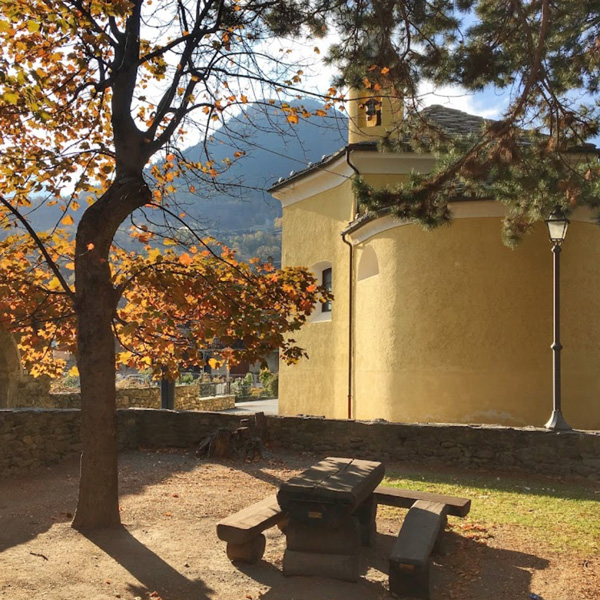
According to Monsignor Duc and Abbot Henry, Introd’s community started to organize itself as a parish around the 7th/8th Centuries, but are uncertain exactly when the parish church, consecrated to the Conversion of St. Paul, was built. During the centuries it has been restored and renewed many times. The original roof was probably replaced by the current stone vault in 1686, and the ancient gothic altar, consecrated in 1441, was similarly replaced by the present baroque altar. The current altar incorporates a painting representing St. Paul’s Conversion on the way to Damascus, and two lateral altars, consecrated to the Virgin and St. Joseph. In 1906, thanks to corvée works of the inhabitants of the village, the church has been extended and attached to the chancel.
The habit of burying dead people inside the church has been maintained during the entire 18th century, as recorded in a document of 1794.
The Height of the bell tower is 26 meters. Similar to the Church, the bell tower has been renewed many times, during the last centuries. The lower part, more ancient, has a roman style architecture and dates, according to historians, of 11th century. More recently, most likely before the 17th century – the period in which the old clock was installed – the tower bell has been restored and its steeple rebuilt. Formerly, the iron cross of the steeple had a cock on the top, the symbol of Aosta Valley belonging to Gallican Church. We know, as written by Robert Berton, that cock “attached to the iron stem, hit and unhinged by lightning, has been ruined and blown away by the wind during a tempest”.

The Chapel of San Sudario (lo Sèn-Chouéo) is located at the south of the Castle’s park circular wall, about ten meters from the “l’Ôla”. Among the numerous chapels of the village, this one deserves a particular mention, as it is considered to be one of the eldest chapels of Aosta Valley. Wanted by the Sarriod family, it was built in the second half of the 5th century. Consecrated to San Sudario, (sacred shroud), in honor of Savoy’s dukes, with whom they had very close relations, and owners of the relic. The chapel has been renewed several times (the first intervention dates 1508-1510), recently by the municipal administration, and it is used for summer expositions.
Outside the chapel there is a wooden cross on a rectangular stone, on which we used to lie the bier, during funerals, like a last stop-over, waiting for the parish to come out of the chapel and accompany the defunct towards his last trip. This ritual continued until quite recently, (last time on March 31st 2000), and then disused due to traffic issues!

